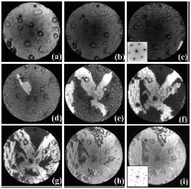A LEEM/μ-LEED investigation of phase transformations in TiOx/Pt(111) ultrathin films
Abstract
A combined use of

- This article is part of the themed collections: Chemistry and physics of metal oxide nanostructures and Celebrating the centenary of the Italian Chemical Society

 Please wait while we load your content...
Please wait while we load your content...